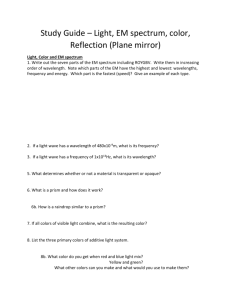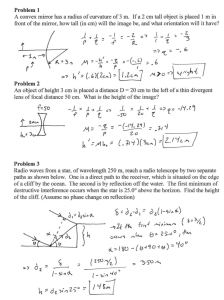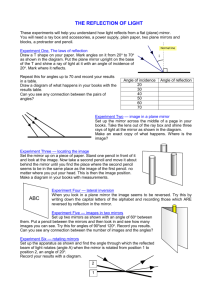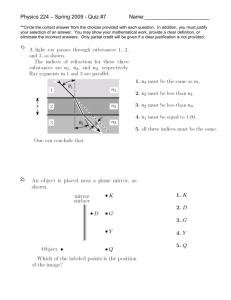Results - St. Joseph's Anglo
advertisement
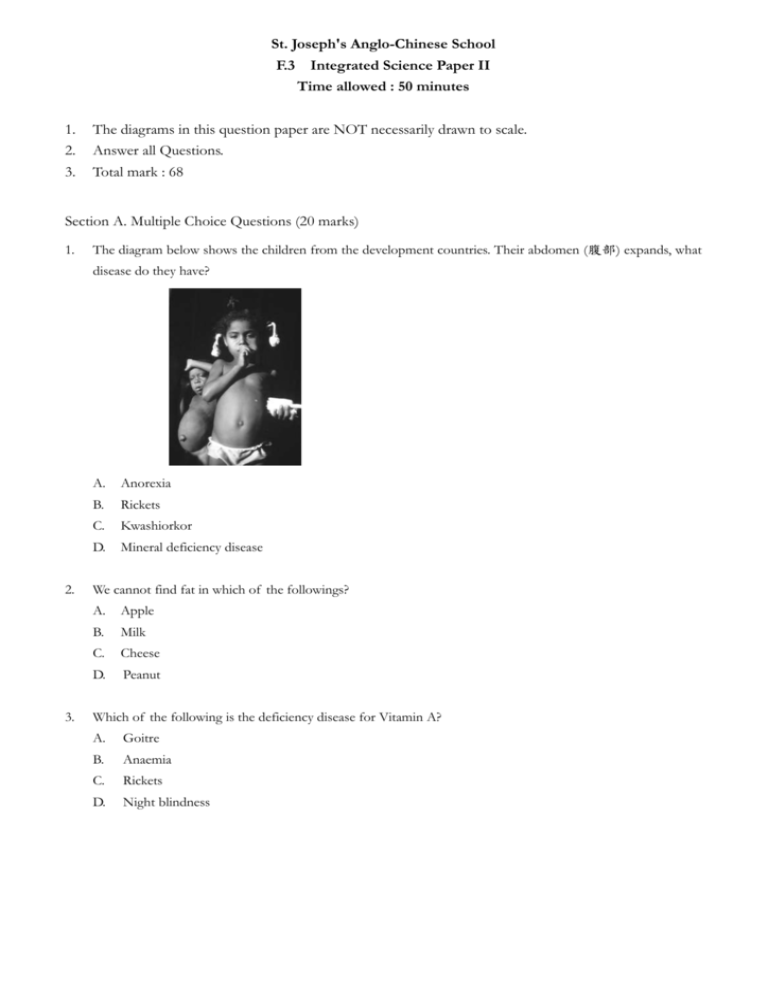
St. Joseph's Anglo-Chinese School F.3 Integrated Science Paper II Time allowed : 50 minutes 1. 2. 3. The diagrams in this question paper are NOT necessarily drawn to scale. Answer all Questions. Total mark : 68 Section A. Multiple Choice Questions (20 marks) 1. The diagram below shows the children from the development countries. Their abdomen (腹部) expands, what disease do they have? 2. 3. A. Anorexia B. Rickets C. Kwashiorkor D. Mineral deficiency disease We cannot find fat in which of the followings? A. Apple B. Milk C. Cheese D. Peanut Which of the following is the deficiency disease for Vitamin A? A. Goitre B. Anaemia C. Rickets D. Night blindness 4. A sample of food was tested as below: Test Method Results First Iodine solution A blue-black solution Second Albustix paper Yellow Third Clinistix paper Blue/purple Fourth Spot on filter paper Permanent translucent From the results, it can be concluded that the food sample contains 5. 6. 7. 8. A. starch, protein and fat only. B. starch, glucose and fat only. C. glucose, protein and fat only. D. starch, glucose, fat and protein. Which of the following food substances contains the highest amount of energy value? A. carbohydrate B. fat C. protein D. mineral Benedict's test can be used to test glucose. Which of the following is the positive result? A. Green solution will be appeared. B. Green precipitate will be formed. C. Brick-red solution will be appeared. D. Brick-red precipitate will be formed. A compound contains A. one element only. B. two elements only. C. more than one element. D. more than two elements. Which of the following matching is correct? Element Compound Mixture A. Steel Iron oxide Iron B. Iron Steel Iron oxide C. Iron Iron oxide Steel D. Steel Iron Iron oxide 9. beaker water chocolate egg white Which of the following best describes the changes in the test tubes shown above? Chocolate Egg white A. Physical change Physical change B. Physical change Chemical change C. Chemical change Physical change D. Chemical change Chemical change 10. What are the elements contained in calcium carbonate? A. Calcium and carbonate only B. Calcium and carbon only C. Calcium and oxygen only D. Calcium, carbon and oxygen only 11. Which of the following metals is discovered at the latest? A. Iron B. Copper C. Aluminium D. Lead 12. What method is normally used to separate copper from its ore? A. Panning B. Heating C. Carbon reduction D. Distillation 13. Metal gold can be found free in Earth’s crust because A. gold is expensive. B. gold is very unreactive. C. gold is a good conductor. D. the abundance of gold is very low. 14. The followings are the melting point of four kinds of metal. Which of them is in liquid state under room temperature? A. -39 C B. 327 C C. 650 C D. 1083 C 15. An object is placed in front of a plane mirror as shown. Which of the following best shows the image formed? A. B. C. D. 16. If the word “SCIENTIST” is placed in front of a plane mirror, how many letters, if any, will appear the same as their images? (repeated letters are also counted) A. 0 B. 2 C. 4 D. 6 17. Which of the following can be used to describe the images formed by a plane mirror? (1) vertically inverted (2) magnified (3) laterally inverted (4) behind the mirror A. (3) only. B. (2) and (4) only. C. (1) and (3) only. D. (3) and (4) only. 18. The diagram below shows the reflection of a light ray at a plane mirror. (i), (ii), (iii) and (iv) are the angles formed. Which of the following matching is correct? Angle of reflection Angle of incidence A. (i) (iv) B. (ii) (iii) C. (iii) (ii) D. (iv) (i) 19. Which of the following is/are correct? (1) The smaller the angle of incidence, the smaller the angle of reflection. (2) The smaller the angle of incidence, the larger the angle of refraction. (3) The normal is perpendicular to the incident ray. A. (1) only B. (2) only C. (1) and (3) only D. (1), (2) and (3) 20. Which of the following is a luminous object? A. glass B. the moon C. a burning candle D. a mirror Section B Fill in the Blanks (40 marks) * Apart from eating fibre-rich food, we should drink plenty of water to prevent (1). * Calcium is an important mineral to prevent (2). * Sweat is mainly made up of water. Sweat can help (3) the body temperature. * Oil can leave a (4) on a piece of filter paper. * When (5) is used to test for protein, the colour changes from yellow to (6). * (7) is present in wholemeal bread and cereals. Though it has no energy value, it gives bulk to the food, helping the intestine to push the food along. * Energy requirement depends on different age, (8) and (9). * (10) takes place in a long muscular tube called the alimentary canal. * At the center of the tooth is the (11) which contains blood vessels and nerves. * Atom is the (12) part of an element which has the properties of that element. * The centre of an atom is a very tiny and extremely dense region called the (13). * Atoms of different elements have different numbers of protons, (14) and (15). * Isotopes are atoms of the same element which have the same number of protons but different number of (16). * All atoms of the same (17) are the same. * Tin sulphide is a compound containing tin and (18). * Potassium carbonate is the compound of (19), (20) and (21). * There are three common ways in extracting metals. Among them, (22) is a physical method while (23) is chemical methods. * Aluminium is not suitable for making hammers as it is (24) but it is good for making kitchen foil as it has (25) and is (26). * One of the advantages of using aluminium instead of iron to make cans is that aluminium is more resistant to (27). * Carbon contains different forms, e.g. graphite and diamond. They are called (28). * Flame test is used to identify (29) elements in compounds. * A silver nitrate test is used to identify (30) in compounds * The lower the position of the metal in the reactivity series, the (31) the extraction is. * Metals in higher positions in the reactivity series would (32) electrons more readily. * Objects that can produce their own light are called (33). * Light travels in a (34) line, we can represent light rays with lines and arrows. * The images formed by plane mirrors are (35) and have the same (36) as the objects. * According to the Law of reflection, angle of (37) is equal to the angle of (38). * Diffuse reflection refers to reflection of light at a (39) surface while regular reflection refers to reflection at a (40) surface. Section C Concepts Understanding Questions (8 marks) For each of the following statements, point out (指出) whether the description in brackets「」is correct or not. If the description is CORRECT, write TRUE. If the description is WRONG, write down the CORRECT DESCRIPTION. Example: Copper is an『element』. True An adult has『28』teeth. ……………. (32) 1. Dietary fibre is essential to life and it is classified as the 「primary food substance」. 2. There are different types of teeth in adults, namely「incisors, canines and molars」. 3. Magnesium carbonate is a compound which contains elements,「magnesium and carbonate」. 4. Sodium and Potassium are two very active metals, so they must store in「paraffin oil」. 5. The lemon used in lemon cell experiment acts as 「a source of energy」. 6. The moon is a 「luminous object」. 7. The image formed by a periscope is 「laterally inverted」. 8. The angle between a plane mirror and its normal is 「180o」 . ~~~ END of PAPER ~~~

